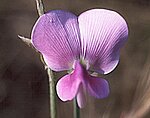CWR
Unlocking the secrets of Crop Wild Relatives
Crop Wild Relatives hold the key to climate change adaptation

What are Crop Wild Relatives?
In very general terms, Crop Wild Relatives (CWR) can be defined as wild plant species that are more or less genetically related to crops, but unlike them, have not been domesticated. In other words CWR are all those species found growing in the wild that to some degree are genetically related to food. fodder and forage crops, medicinal plants, condiments, ornamental and forestry species used by humankind. Most CWR are found growing as weeds in disturbed habitats, such as roadsides, field margins, orchards and traditionally managed agricultural land.

How many Crop Wild Relatives are there?
Latest estimates report that there are between 50,000-60,000 crop wild relatives in the wild (Maxted & Kell, 2009). 10,739 of these are important plant genetic resources for food and agriculture (PGRFA) and 700 of these, representing less than 0.26% of the world flora, are the most important in terms of global food security and the ones requiring urgent conservation measures.
The distribution of crop wild relatives is mostly correlated with the diversity of flora within a country. The greater the diversity of plant species, the greater the number of CWR occurring within a country. Many developing countries, located within centres of plant diversity and centres of crop diversity, contain large numbers of important crop relatives.
Why are they important?
CWR have been used to improve yields and the nutritional quality of crops since the dawn of agriculture, with farmers often planting CWR alongside domesticated crops to promote natural crossing of beneficial traits. Genes from wild plants have also provided cultivars with resistance against pests and diseases and improved tolerance to abiotic stresses The genetic transfer of beneficial traits from wild varieties has been so widespread, that most modern cultivars of crops contain some genes that are derived from a wild relative.
What are Crop Wild Relatives?

In very general terms, Crop Wild Relatives (CWR) can be defined as wild plant species that are more or less genetically related to crops, but unlike them, have not been domesticated. In other words CWR are all those species found growing in the wild that to some degree are genetically related to food. fodder and forage crops, medicinal plants, condiments, ornamental and forestry species used by humankind. Most CWR are found growing as weeds in disturbed habitats, such as roadsides, field margins, orchards and traditionally managed agricultural land.